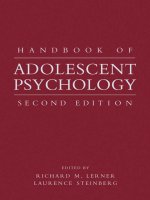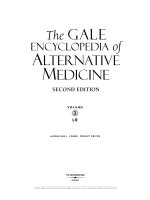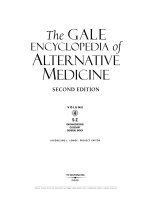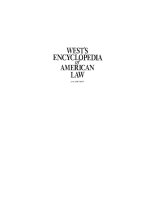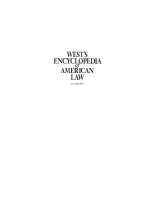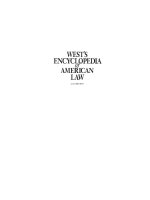- Trang chủ >>
- Y - Dược >>
- Ngoại khoa
oxford handook of respiratory medicine 2nd ed
Bạn đang xem bản rút gọn của tài liệu. Xem và tải ngay bản đầy đủ của tài liệu tại đây (4.28 MB, 879 trang )
FEV
1
/VC Caucasian FEMALES courtesy of Vitalograph
Prediction Nomogram
FEMALES
Height
(cm) (inches)
FVC
(litre)
FEV
1
(litre)
BTPS
Age
(yrs)
180
170
160
150
140
70
69
68
67
66
65
64
63
62
61
60
59
58
57
56
40
30
20
60
70
50
2
3
4
3
2
Index to emergency topics
Alveolar haemorrhage 27
Anaphylaxis 641
Asthma 130
Carbon monoxide poisoning 607
COPD exacerbation 177
Cricothyroidotomy 764
Cystic fi brosis 216
Haemoptysis (massive) 43
Hypercalcaemia 304
Inappropriate ADH secretion 306
Paraquat poisoning 600
Pulmonary embolus 412
Sickle cell acute chest syndrome 565
Spinal cord compression 309
Superior vena cava obstruction 302
Tension pneumothorax 382
Toxic inhaled substances 602
Upper airways obstruction 641
OXFORD MEDICAL PUBLICATIONS
Oxford Handbook of
Respiratory
Medicine
Published and forthcoming Oxford Handbooks
Oxford Handbook of Clinical Medicine 6/e (also available for PDAs
and in a Mini Edition)
Oxford Handbook of Clinical Specialties 7/e
Oxford Handbook of Acute Medicine 2/e
Oxford Handbook of Anaesthesia 2/e
Oxford Handbook of Applied Dental Sciences
Oxford Handbook of Cardiology
Oxford Handbook of Clinical Dentistry 4/e
Oxford Handbook of Clinical and Laboratory Investigation 2/e
Oxford Handbook of Clinical Diagnosis
Oxford Handbook of Clinical Haematology 2/e
Oxford Handbook of Clinical Immunology and Allergy 2/e
Oxford Handbook of Clinical Pharmacy
Oxford Handbook of Clinical Surgery 2/e
Oxford Handbook of Critical Care 2/e
Oxford Handbook of Dental Patient Care 2/e
Oxford Handbook of Dialysis 2/e
Oxford Handbook of Emergency Medicine 3/e
Oxford Handbook of Endocrinology and Diabetes
Oxford Handbook of ENT and Head and Neck Surgery
Oxford Handbook for the Foundation Programme
Oxford Handbook of Gastroenterology and Hepatology
Oxford Handbook of General Practice 2/e
Oxford Handbook of Genitourinary Medicine, HIV and AIDS
Oxford Handbook of Geriatric Medicine
Oxford Handbook of Medical Sciences
Oxford Handbook of Nephrology and Hypertension
Oxford Handbook of Neurology
Oxford Handbook of Obstetrics and Gynaecology
Oxford Handbook of Oncology 2/e
Oxford Handbook of Ophthalmology
Oxford Handbook of Palliative Care
Oxford Handbook of Practical Drug Therapy
Oxford Handbook of Psychiatry
Oxford Handbook of Public Health Practice 2/e
Oxford Handbook of Rehabilitation Medicine
Oxford Handbook of Respiratory Medicine
Oxford Handbook of Rheumatology 2/e
Oxford Handbook of Tropical Medicine 2/e
Oxford Handbook of Urology
Oxford Handbook of
Respiratory
Medicine
SECOND EDITION
Stephen Chapman
Clinical Lecturer in Respiratory Medicine,
University of Oxford
Grace Robinson
Consultant in Respiratory Medicine,
Royal Berkshire Hospital, Reading
John Stradling
Professor of Respiratory Medicine,
University of Oxford
Sophie West
Consultant in Respiratory Medicine,
Oxford
1
1
Great Clarendon Street, Oxford OX2 6DP
Oxford University Press is a department of the University of Oxford.
It furthers the University's objective of excellence in research, scholarship,
and education by publishing worldwide in
Oxford New York
Athens Auckland Bangkok Bogotá Buenos Aires Cape-Town
Chennai Dar-es-Salaam Delhi Florence Hong-Kong Istanbul Karachi
Kolkata Kuala-Lumpur Madrid Melbourne Mexico-City Mumbai Nairobi
Paris São-Paulo Shanghai Singapore Taipei Tokyo Toronto Warsaw
with associated companies in Berlin Ibadan
Oxford is a registered trade mark of Oxford University Press
in the UK and in certain other countries
Published in the United States
by Oxford University Press Inc., New York
© Oxford University Press, 2009
The moral rights of the author have been asserted
Database right Oxford University Press (maker)
First edition published 2005
First published 2009
All rights reserved. No part of this publication may be reproduced,
stored in a retrieval system, or transmitted, in any form or by any means,
without the prior permission in writing of Oxford University Press,
or as expressly permitted by law, or under terms agreed with the appropriate
reprographics rights organization. Enquiries concerning reproduction
outside the scope of the above should be sent to the Rights Department,
Oxford University Press, at the address above
You must not circulate this book in any other binding or cover
and you must impose this same condition on any acquirer
Typeset by Cepha Imaging Private Ltd., Bangalore, India
Printed in Italy
on acid-free paper by
LegoPrint S.p.A.
ISBN 978-0-19-954516-2
10 9 8 7 6 5 4 3 2 1
Oxford University Press makes no representation, express or implied, that the drug
dosages in this book are correct. Readers must therefore always check the product
information and clinical procedures with the most up to date published product
information and data sheets provided by the manufacturers and the most recent
codes of conduct and safety regulations. The authors and the publishers do not
accept responsibility or legal liability for any errors in the text or for the misuse or
misapplication of material in this work.
2 Except where otherwise stated, drug doses and recommendations are for the
non-pregnant adult who is not breast-feeding.
v
Preface
This Handbook of Respiratory Medicine has been written largely by specialist
registrars, for specialist registrars. Three of the four authors, Stephen Chapman,
Grace Robinson, and Sophie West, are specialist registrars on the Oxford
rotation and John Stradling is Professor of Respiratory Medicine in Oxford.
It is in a format that the authors would like to have had when they started
their specialist registrar training. However, we hope that any health worker
or student with an interest in respiratory medicine will fi nd this text a
rapid and useful reference source.
The layout of the book tries to fulfi l the requirement to be able to look
up a topic quickly when the clinical need arises, but also to provide a bit
more insight into the more diffi cult areas. Therefore the chapters are of
necessity different in style and refl ect the authors’ own views on how to
best approach and understand an area.
The handbook is divided into fi ve sections: clinical presentations and
approaches to symptoms and problems; the clinical conditions themselves;
supportive information; procedures; and useful appendices (also on the
inside covers), containing more technical and reference information.
We hope you fi nd it helpful. Feedback on errors and omissions would
be much appreciated. Please post your comments via the OUP website:
www.oup.com/uk/medicine/handbooks.
Stephen Chapman
Grace Robinson
John Stradling
Sophie West
June 2005
The second edition of this book has allowed us to make several improve-
ments in response to readers’ suggestions. We have changed the order of
chapters within each section to alphabetical, and improved the index, to
make the contents more rapidly accessible. We have added new content
such as more detailed radiology, pandemic infl uenza, and pulmonary com-
plications of sickle cell disease. In addition, we have updated and enhanced
topics where there have been new guidelines and relevant publications. The
overall aim of the book, to provide a rapid and comprehensive resource for
all those involved in respiratory medicine, has remained paramount.
October 2008
vi
We would like to offer our grateful thanks to the following friends and
colleagues for their reviewing and advice on various sections of this book.
First edition
Dr Nicholas Bates, Dr Lesley Bennett, Dr Rachel Bennett, Dr Malcolm
Benson, Dr Penny Bradbury, Mrs Debbie Buttar, Dr James Calvert, Dr Jane
Collier, Dr Graham Collins, Dr Chris Conlon, Dr Chris Davies, Dr Helen
Davies, Dr Rob Davies, Dr Thearina de Beer, Mrs Joan Douglass, Dr Rachael
Evans, Dr Fergus Gleeson, Dr Maxine Hardinge, Dr Ling Pei Ho, Dr Andrew
Jeffreys, Dr Nick Maskell, Dr Phil Mason, Dr Kim McAnaulty, Dr Fiona McCann,
Dr Sarah Menzies, Dr Annabel Nickol, Dr Jayne Norcliffe, Dr Jeremy Parr,
Mrs Lisa Priestley, Dr Naj Rahman, Dr Catherine Richardson, Mrs Jo Riley,
Dr Peter Sebire, Mrs Gerry Slade, Dr Mark Slade, Dr S Rolf Smith,
Dr Catherine Swales, Dr Denis Talbot, Dr David Taylor, Dr Catherine
Thomas, Dr Estée Török, Dr David Waine, Dr Chris Wathen, Dr John
Wiggins, and Dr Eleanor Wood.
Second edition: additional acknowledgements
Dr Luke Howard, Dr Clare Jeffries, Dr Stuart Mucklow, Dr Andrew
Stanton, and Mrs Jan Turner-Wilson. Dr Fergus Gleeson and Dr Rachel
Benamore provided considerable help with the radiology section.
Acknowledgements
vii
Abbreviations xi
Part 1 Clinical presentations—approaches
to problems
1 Breathlessness
3
2 Chest pain
7
3 Chronic cough and a normal CXR
11
4 Critically ill patient with respiratory disease
21
5 Diffuse alveolar haemorrhage
25
6 Diffuse lung disease
29
7 Haemoptysis
39
8 Pleural effusion
45
9 Post-operative breathlessness
57
10 Pregnancy and breathlessness
61
11 Pre-operative assessment
65
12 Pulmonary disease in the immunocompromised
(non-HIV)
67
13 Pulmonary disease in the
immunocompromised (HIV)
79
14 Sleep and ventilation
85
15 Unexplained ventilatory failure
91
Part 2 Clinical conditions
16 Acute respiratory distress syndrome
101
17 Asbestos and the lung
107
18 Asthma
121
19 Bronchiectasis
149
Contents
20 Bronchiolitis
159
21 Chronic obstructive pulmonary disease (COPD)
165
22 Connective tissue disease and the lung
185
23 Cor pulmonale
201
24 Cystic fi brosis
205
25 Eosinophilic lung disease
227
26 Extreme environments—fl ying, altitude, diving
235
27 Gastrointestinal disease and the lung
243
28 Hypersensitivity pneumonitis
249
29 Hyperventilation syndrome
255
30 Idiopathic interstitial pneumonias
259
31 Lung cancer
279
32 Lung transplantation
317
33 Mediastinal abnormalities
331
34 Paediatric lung disorders pertinent to adult patients
339
35 Pleural effusion
345
36 Pneumoconioses
363
37 Pneumothorax
373
38 Pulmonary hypertension
385
39 Pulmonary thromboembolic disease
401
40 Respiratory infection—bacterial
419
41 Respiratory infection—fungal
465
42 Respiratory infection—mycobacterial
487
43 Respiratory infection—parasitic
523
44 Respiratory infection—viral
529
45 Sarcoidosis
547
46 Sickle cell disease—pulmonary complications
561
CONTENTS
ix
47 Sleep apnoea and hypoventilation
567
48 Toxic agents
593
49 Unusual conditions (BOLD)
609
50 Upper airway diseases
639
51 Vasculitis and the lung
649
Part 3 Supportive care
52 Ethical issues
665
53 Financial entitlements
671
54 Immunosuppressive drugs
675
55 Inhalers and nebulizers
683
56 Intensive therapy unit (ITU)—when to involve
689
57 Non-invasive ventilation
693
58 Oxygen therapy
703
59 Palliative care
713
60 Pulmonary rehabilitation
723
61 Smoking cessation
729
62 Tracheostomy
735
Part 4 Practical procedures
63 Airway management
741
64 Bronchoscopy
745
65 Chest drains
757
66 Cricothyroidotomy
763
67 Miscellaneous diagnostic tests
767
68 Pleural biopsy
771
69 Pleurodesis
775
CONTENTS
x
70 Pneumothorax aspiration
779
71 Thoracentesis
781
72 Thoracoscopy (medical)
785
Appendices
1 Blood gases and acid–base balance
791
2 BMI calculator; height and weight converter
805
3 CT anatomy of the thorax
807
4 CT patterns of lung disease
815
5 Lung function testing
827
6 Plain radiograph and lobar collapses
837
7 Radiological investigations and radiation exposure
841
8 Useful websites
845
Index 847
FEV
1
nomogram—males inside cover
FEV
1
nomogram—females inside cover
CONTENTS
xi
A–a alveolar to arterial gradient
ABG arterial blood gas
ABPA allergic bronchopulmonary aspergillosis
ACE angiotensin-converting enzyme
ADH antidiuretic hormone
AFB acid-fast bacillus
AFP alpha-fetoprotein
AIA aspirin-induced asthma
AIDS acquired immune defi ciency syndrome
AIP acute interstitial pneumonia
ANA antinuclear antibody
ANCA antinuclear cytoplasmic antibody
ANP atrial natriuretic peptide
APTT activated partial thromboplastin time
ARDS acute respiratory distress syndrome
ATRA all-trans retinoic acid
ATS American Thoracic Society
AVM arteriovenous malformation
A&E accident and emergency
BAL bronchoalveolar lavage
BCG bacille Calmette–Guérin
bd twice a day
BHR bronchial hyperreactivity or hyperresponsiveness
BIPAP bi-level positive airways pressure
BMI body mass index (kg/m
2
)
BNP B-type natriuretic peptide
BOOP bronchiolitis obliterans organizing pneumonia
BP blood pressure
BPD bronchopulmonary dysplasia
BSAC British Subaqua Club
BTS British Thoracic Society
CABG coronary artery bypass graft
CAP community-acquired pneumonia
CCB calcium-channel blocker
CCF congestive cardiac failure
CF cystic fi brosis
Abbreviations
CFA cryptogenic fi brosing alveolitis
CFT complement fi xation test
CFTR cystic fi brosis transmembrane conductance regulator
CHART continuous hyperfractionated accelerated radiotherapy
CI contraindication
CLL chronic lymphocytic leukaemia
CMV cytomegalovirus
CNS central nervous system
CO carbon monoxide
CO
2
carbon dioxide
COHb carboxyhaemoglobin
COP cryptogenic organizing pneumonia
COPD chronic obstructive pulmonary disease
CPAP continuous positive airway pressure
CRP C-reactive protein
CSA central sleep apnoea
CSF cerebrospinal fl uid
CT computed tomography
CTPA computed tomographic pulmonary angiogram
CVA cardiovascular accident
CVD cardiovascular disease
CVP central venous pressure
CXR chest radiograph
DIC disseminated intravascular coagulation
DIP desquamative interstitial pneumonitis
dsDNA double-stranded DNA
DVLA Department of Vehicle Licensing Authority
DVT deep vein thrombosis
EBUS endoscopic bronchial ultrasound
ECG electrocardiogram
Echo echocardiogram
ECOG Eastern Cooperative Oncology Group
EEG electroencephalogram
EGFR epidermal growth factor receptor
EIA enzyme immunoassay
ELCAP Early Lung Cancer Action Project
ELISA enzyme-linked immunosorbent assay
EMG electromyogram
ENT ear, nose, and throat
EOG electro-oculogram
xii
ABBREVIATIONS
xiii
ABBREVIATIONS
EPAP expiratory positive airways pressure
ERS European Respiratory Society
ESR erythrocyte sedimentation rate
ESS Epworth sleepiness scale/score
EUS-FNA endoscopic ultrasound fi ne-needle aspiration
FBC full blood count
FEV
1
forced expiratory volume in 1 s
FiO
2
fractional inspired oxygen
FNA fi ne-needle aspirate
FOB fi bre optic bronchoscopy
FPAH familial pulmonary arterial hypertension
FRC functional residual capacity
FVC forced vital capacity
g gram
GBM glomerular basement membrane
GCS Glasgow coma scale
GI gastrointestinal
GORD gastro-oesophageal refl ux disease
GP general practitioner
GU genitourinary
GVHD graft-versus-host disease
h hour
H2 histamine receptors, type 2
HAART highly active antiretroviral therapy
HACE high altitude cerebral oedema
HAPE high altitude pulmonary oedema
Hb haemoglobin
HCG human chorionic gonadotrophin
HCO
–
3
bicarbonate
HHT hereditary haemorrhagic telangiectasia
HIV human immunodefi ciency virus
HLA human leucocyte antigen
HOOF home oxygen order form
HP hypersensitivity pneumonitis
HRCT high resolution computed tomography
HSCT haematopoietic stem cell transplant
HSV herpes simplex virus
ICU intensive care unit
IDDM insulin-dependent diabetes mellitus
IFA indirect immunofl uorescence assay
xiv
IgE immunoglobulin E
IgG immunoglobulin G
IgM immunoglobulin M
IIP idiopathic interstitial pneumonia
ILD interstitial lung disease
IM intramuscular
INR international normalized ratio
IPAH idiopathic pulmonary arterial hypertension
IPAP inspiratory positive airways pressure
IPF idiopathic pulmonary fi brosis
IRIS immune reconstitution infl ammatory syndrome
ITU intensive therapy unit
IV intravenous
IVC inferior vena cava
JVP jugular venous pressure
kCO carbon monoxide transfer factor
l litre
LAM lymphangioleiomyomatosis
LCH Langerhans cell histiocytosis
LDH lactate dehydrogenase
LFT liver function test
LIP lymphoid interstitial pneumonia
LMWH low molecular weight heparin
LOS lower oesophageal sphincter
LTOT long-term oxygen therapy
LVRS lung volume reduction surgery
M, C & S microscopy, culture, and sensitivity
MDI metered dose inhaler
MDR-TB multidrug-resistant TB
MDT multidisciplinary team
mg milligram
MGUS monoclonal gammopathy of uncertain signifi cance
MI myocardial infarction
min minute
MND motor neuron disease
MRI magnetic resonance imaging
MRSA methicillin (or multiply) resistant Staphylococcus aureus
MTB mycobacterium tuberculosis
ng nanogram
NIPPV non-invasive positive pressure ventilation
ABBREVIATIONS
xv
NIV non-invasive ventilation
NNRTI non-nucleoside reverse transcription inhibitor
NO nitric oxide
NO
2
nitrogen dioxide
non-REM non-rapid eye movement sleep
NSAID non-steroidal anti-infl ammatory drug
NSCLC non-small cell lung cancer
NSIP non-specifi c interstitial pneumonia
NTM non-tuberculous mycobacteria
NYHA New York Heart Association
OCP oral contraceptive pill
od once a day
OSA obstructive sleep apnoea
OSAHS obstructive sleep apnoea/hypopnoea syndrome
OSAS obstructive sleep apnoea syndrome
PaCO
2
arterial carbon dioxide tension
PAF platelet-activating factor
PaO
2
arterial oxygen tension
PAP pulmonary artery pressure
PAS para-aminosalicylic acid
PAVM pulmonary arteriovenous malformations
PC
20
provocative concentration (of histamine or methacholine)
causing a 20% fall in FEV
1
PCD primary ciliary dyskenesia
PCO
2
carbon dioxide tension
PCP Pneumocystis carinii (now jiroveci) pneumonia
PCR polymerase chain reaction
PCT primary care trust
PE pulmonary embolus
PEEP positive end expiratory pressure
PEFR peak expiratory fl ow rate
PEG percutaneous endoscopic gastrostomy
PET position emission tomography
PFT pulmonary function test
PHLS Public Health Laboratory Service
PHT pulmonary hypertension
PO orally/by mouth
PO
2
oxygen tension
PPH primary pulmonary hypertension
prn as required
PSA prostate-specifi c antigen
ABBREVIATIONS
xvi
PSB protected specimen brush
PSG polysomnography
PT prothrombin time
PTH parathyroid hormone
qds four times a day
RADS reactive airways dysfunction syndrome
RAST radioallergosorbent test
RBBB right bundle branch block
RB-ILD respiratory bronchiolitis-associated interstitial lung
disease
RCP Royal College of Physicians
RCT randomized controlled trial
REM rapid eye movement
RFA radiofrequency ablation
RNP ribonuclear protein
RSV respiratory syncytial virus
RT-PCR reverse transcriptase polymerase chain reaction
RV residual volume
RVH right ventricular hypertrophy
SaO
2
arterial oxygen saturation
SARS severe acquired respiratory syndrome
SBE subacute bacterial endocarditis
SC subcutaneous
SCL-70 scleroderma antibody (to topoisomerase 1)
SCLC small cell lung cancer
SCUBA self-contained underwater breathing apparatus
SBOT short burst oxygen therapy
SE side-effect
SLE systemic lupus erythematosus
SO
2
sulphur dioxide
SOB shortness of breath
SVC superior vena cava
SVCO superior vena caval obstruction
TB tuberculosis
TBB transbronchial biopsy
tds three times a day
Th2 T-helper 2 cell
TIA transient ischaemic attack
TLC total lung capacity
TLCO total lung carbon monoxide transfer factor
TNF tumour necrosis factor
ABBREVIATIONS
xvii
TPMT thiopurine methyltransferase
TRALI transfusion-related acute lung injury
TSH thyroid-stimulating hormone
U&E urea and electrolytes
UIP usual interstitial pneumonia
UK United Kingdom
URT upper respiratory tract
URTI upper respiratory tract infection
USS ultrasound scan
V/Q ventilation/perfusion ratio
VAP ventilator-acquired pneumonia
VATS video-assisted thoracoscopic surgery
VC vital capacity
VTE venous thromboembolism
WBC white blood cell count
WCC white cell count
WHO World Health Organization
ZN Ziehl–Neelsen
A
1
-AT A
1
-antitrypsin
ß
2
beta-2 adrenergic receptor
ßHCG beta human chorionic gonadotrophin
µg micrograms
ABBREVIATIONS
This page intentionally left blank
Part 00Part 1
1 Breathlessness
3
2 Chest pain
7
3 Chronic cough and a normal CXR
11
4 Critically ill patient with respiratory disease
21
5 Diffuse alveolar haemorrhage
25
6 Diffuse lung disease
29
7 Haemoptysis
39
8 Pleural effusion
45
9 Post-operative breathlessness
57
10 Pregnancy and breathlessness
61
11 Pre-operative assessment
65
12 Pulmonary disease in the
67
immunocompromised (non-HIV)
13 Pulmonary disease in the
79
immunocompromised (HIV)
14 Sleep and ventilation
85
15 Unexplained ventilatory failure
91
Clinical
presentations—
approaches to
problems
This page intentionally left blank
3
Clinical assessment and causes 4
Specifi c situations 6
Breathlessness
Chapter 1
4
Clinical assessment and causes
Physiological mechanisms of breathlessness
Dyspnoea refers to the abnormal and uncomfortable awareness of
breathing. Its physiological mechanisms are poorly understood; pos-
sible afferent sources for the sensation include receptors in respiratory
muscles, juxtacapillary (J) receptors (sense interstitial fl uid), and chemore-
ceptors (sensing iCO
2
and dO
2
).
Clinical assessment
All patients need a full history and examination. Key points in the assess-
ment are:
• Duration and onset of breathlessness. The box opposite groups the
causes of breathlessness by speed of onset, although in practice some
variability and overlap exists. Patients often underestimate the duration
of symptoms—enquiring about exercise tolerance over a period of
time is a useful way of assessing duration and progression
- Severity of breathlessness. Assess the level of handicap and disability by
asking about effects on lifestyle, work, and daily activities
- Exacerbating factors. Ask about rest and exertion, nocturnal symptoms,
and body position. The timing of nocturnal breathlessness may provide
clues to the likely cause: left ventricular failure causes breathlessness
after a few hours of sleep, and resolves after about 45 min; asthma
tends to occur later in the night; laryngeal inspiratory stridor causes
noisy breathlessness of very short duration (<1 min); and Cheyne–
Stokes apnoeas result in breathlessness that is recurrent and clears
each time in less than 30 s. Orthopnoea is suggestive of left ventricular
failure or diaphragm paralysis, although it is also common in many
chronic lung diseases. Breathlessness during swimming is characteristic
of bilateral diaphragm paralysis. Trepopnoea refers to breathlessness
when lying on one side as a result of ipsilateral pulmonary disease
- Associated symptoms, such as cough, haemoptysis, chest pain, wheeze,
stridor, fever, loss of appetite and weight, ankle swelling, and voice
change. Wheeze may occur with pulmonary oedema, pulmonary
embolism, bronchiolitis, and anaphylaxis, in addition to asthma and
COPD
- Personal and family history of chest disease
- Lifetime employment, hobbies, pets, travel, smoking, illicit drug use,
medications
- Examination of the cardiovascular and respiratory systems. Observe
the pattern and rate of breathing. Assess for signs of respiratory dis-
tress. Look for paradoxical abdominal movement if the history suggests
diaphragmatic paralysis. A useful bedside test is to exercise the patient
(e.g. by stepping on and off a 15–20-cm block) until their breathlessness
occurs, and then measure oximetry immediately on stopping when the
fi nger is still; a fall in oxygen saturation is expected with organic causes
of dyspnoea.
CHAPTER 1 Breathlessness
